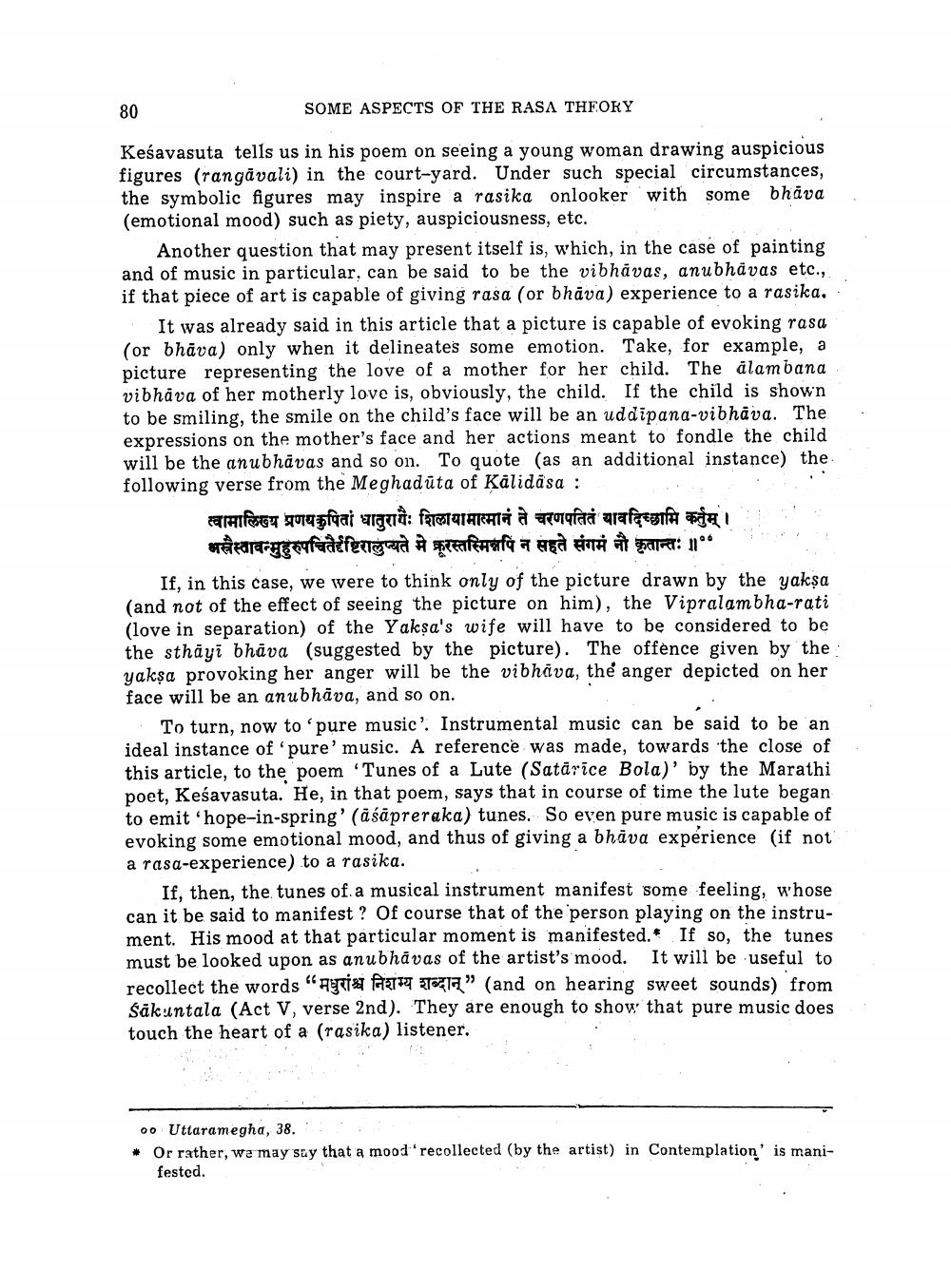________________
80
SOME ASPECTS OF THE RASA THEORY
Keśavasuta tells us in his poem on seeing a young woman drawing auspicious figures (rangāvali) in the court-yard. Under such special circumstances, the symbolic figures may inspire a rasika onlooker with some bhava (emotional mood) such as piety, auspiciousness, etc.
Another question that may present itself is, which, in the case of painting and of music in particular, can be said to be the vibhāvas, anubhavas etc., if that piece of art is capable of giving rasa (or bhāva) experience to a rasika.
It was already said in this article that a picture is capable of evoking rasa (or bhāva) only when it delineates some emotion. Take, for example, a picture representing the love of a mother for her child. The alambana vibhāva of her motherly love is, obviously, the child. If the child is shown to be smiling, the smile on the child's face will be an uddipana-vibhāva. The expressions on the mother's face and her actions meant to fondle the child will be the anubhāvas and so on. To quote (as an additional instance) the following verse from the Meghaduta of Kalidasa :
त्वामालिख्य प्रणयकुपितां धातुरायैः शिलायामात्मानं ते चरणपतितं यावदिच्छामि कर्तुम
अस्तावन्मुहरुपचितैदृष्टिरालुप्यते मे फरस्तस्मिन्नपि न सहते संगम नौ कृतान्तः ॥ If, in this case, we were to think only of the picture drawn by the yakşa (and not of the effect of seeing the picture on him), the Vipralambha-rati (love in separation) of the Yakşa's wife will have to be considered to be the sthāyi bhāva (suggested by the picture). The offence given by the yaksa provoking her anger will be the vibhava, the anger depicted on her face will be an anubhāva, and so on.
To turn, now to 'pure music'. Instrumental music can be said to be an ideal instance of pure' music. A reference was made, towards the close of this article, to the poem 'Tunes of a Lute (Satărice Bola)' by the Marathi poet, Keśavasuta. He, in that poem, says that in course of time the lute began to emit 'hope-in-spring' (aśāpreraka) tunes. So even pure music is capable of evoking some emotional mood, and thus of giving a bhāva experience (if not a rasa-experience) to a rasika.
If. then, the tunes of a musical instrument manifest some feeling, whose can it be said to manifest? Of course that of the person playing on the instrument. His mood at that particular moment is manifested.* If so, the tunes must be looked upon as anubhāvas of the artist's mood. It will be useful to recollect the words "Fiat ForTT21" (and on hearing sweet sounds) from sakuntala (Act V, verse 2nd). They are enough to show that pure music does touch the heart of a (rasika) listener.
00 Uttaramegha, 38. Or rather, we may say that a mood' recollected by the artist) in Contemplation' is manifested.




